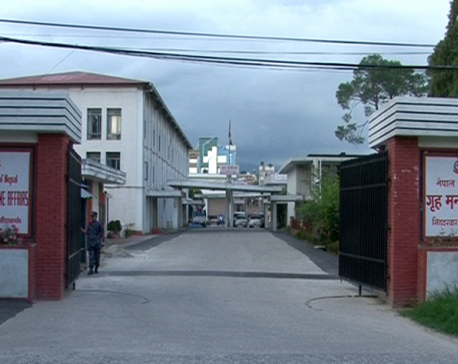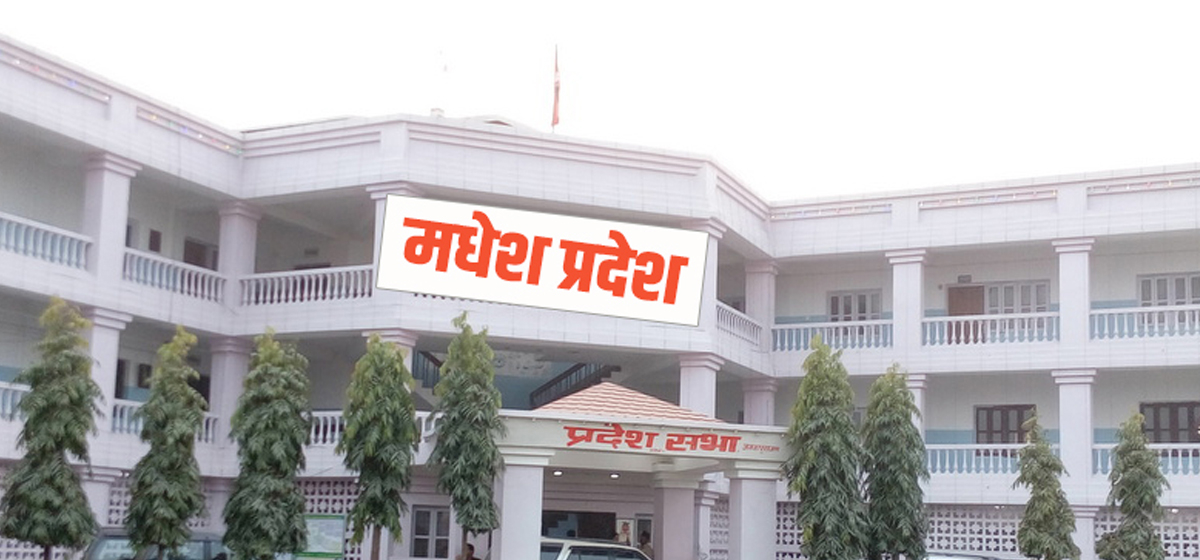
OR
Bank deposits expand as govt expenditure increases
Published On: May 27, 2018 04:30 AM NPT By: Republica | @RepublicaNepal
Focus on loan recovery, deposit growth likely to ease pressure on banks' liquidity situation
KATHMANDU, May 27: Banking institutions that are facing shortage of lendable fund are now feeling a sigh of relief with the recent rise of stock of deposits as the government expedites development expenditures at the end of the fiscal year.
According to the latest data of Nepal Bankers Association (NBA), the total deposit of 28 commercial banks rose by 0.83 percent, or Rs 19 billion, in the week ending on May 18 while their loan disbursement grew by Rs 17 billion. The total outstanding deposit of all commercial banks stands at Rs 2,312 billion while the lending is Rs 2,040 billion, according to the NBA data.
Marking an end to the year-long trend of credit growth outpacing deposit, credit growth slowed down in the review period while stocks of deposit rose in the banking system.Most of the bankers attribute the deposit growth to the government spending at the fiscal year end.
With the fiscal year end one month away, the government is ramping up its development expenditures. Similarly, the payment to contractors and other parties by the government agencies, which have been held due to various reasons, get released in the eve of the fiscal year, helping to shift more cash from government treasury to the banking system.
According to the Financial Comptroller General Office, the capital expenditure of the government stands at 40.93 percent, or Rs 137.18 billion, as of May 17. The government has a target to spend Rs 335.18 billion by the end of the current fiscal year 2017/18.“Like in the previous years, the pattern of the government spending has remained the same. As the government has increased spending, deposit in the banking system has also increased,” a bank executive told Republica.
“The last quarter is the period when banks focus on recovery of loans rather than on new lending,” said another banker.
Fast deposit growth and slow credit growth are likely to ease the pressure on credit to core capital cum deposit (CCD) ratio of banks. Many banks have seen their CCD ratio reaching the regulatory limit of 80 percent.
The CCD ratio which remained at a saturated level almost all the year was due to 'aggressive' expansion of lending by banking institutions to meet the shareholders' expectation of returns although there was slowdown in the flow of deposits. With the shortage of deposit to extend as loans, banks have even competed to lure each other's depositors through various schemes including upfront interest payment to depositors. The NBA even imposed a cap the fixed deposit rate at 11 percent and saving rate at 8 percent despite criticism that such move amounts to a 'interest rate cartel'.
You May Like This

NC slams govt for annulling political appointment by erstwhile govt (with full text)
KATHMANDU, July 5: Nepali Congress has slammed government for annulling all political appointments made by the then government after the... Read More...

Govt decides to freeze bank accounts of transport entrepreneurs
KATHMANDU, May 4: The government has decided to freeze bank accounts of transport entrepreneurs after they halted operation of vehicles across... Read More...

Janata Bank acquires Siddhartha Dev Bank
KATHMANDU, July 17: Janata Bank has completed acquisition of Siddhartha Development Bank Ltd. ... Read More...







Just In
- First meeting of Nepal-China aid projects concludes
- Lungeli appointed as Minister for Labor and Transport in Madhesh province govt
- Bus knocks down a pilgrim to death in Chitwan
- One killed in tractor-hit
- Karnali Chief Minister Kandel to seek vote of confidence today
- Chain for Change organizes ‘Project Wings to Dreams’ orientation event for inclusive education
- Gold price decreases by Rs 200 per tola today
- National Development Council meeting underway












Leave A Comment